Text
The Endocrine System
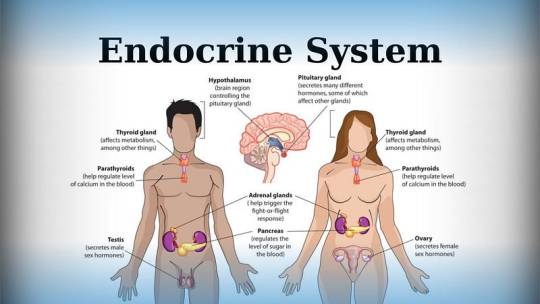
Introduction
The endocrine system is a complex network containing a symphony of hormonal interactions crucial for maintaining physiological equilibrium. Comprising glands, organs, and tissues dispersed throughout the body, its influence allows various bodily functions, spanning from metabolism to reproduction and beyond. This topic endeavors to provide an in-depth exploration of the endocrine system, encompassing its anatomy, physiological functions, associated conditions, and strategies for proactive care. By indulging into this indispensable regulatory system, we aim to equip readers with a comprehensive understanding to prioritize their hormonal health effectively.
Anatomy of the Endocrine System
The anatomy of the endocrine system is contained by an array of specialized glands, organs, and tissues, each endowed with the capacity to synthesize and dispatch hormones into the bloodstream. Principal among these are:
Endocrine Glands: These specialized tissues, including the pituitary gland, thyroid gland, and adrenal glands, secrete hormones directly into circulation, exerting systemic effects.
Endocrine Organs: Organs such as the hypothalamus, pancreas, and reproductive glands contribute to hormonal regulation, interfacing closely with the nervous system to modulate physiological responses.
Endocrine-Related Tissues: Adjunct to traditional endocrine structures, adipose tissue, kidneys, and even the heart harbor the capability to produce hormones, further augmenting the system’s complexity and regulatory capacity.
Functions of the Endocrine System
The cardinal function of the endocrine system is hormone secretion, holding up varied network of intercellular communication. Hormones, acting as molecular messengers, traverse the bloodstream to target cells, eliciting diverse physiological responses.
Key functions include:
Metabolism Regulation: Hormonal content govern metabolic processes, dictating energy expenditure, glucose homeostasis, and lipid metabolism.
Homeostatic Control: Endocrine signaling regulates internal threshold, modulating blood pressure, fluid balance, and body temperature.
Development and Growth: Hormonal interplay underpins growth trajectories and developmental milestones, steering embryonic stages and pubertal maturation.
Sexual Function and Reproduction: Hormonal modulation governs reproductive physiology, controlling fertility, libido, and secondary sexual characteristics.
Neuroendocrine Integration: The endocrine system reveals intimately with the nervous system, harmonizing behavioral and physiological responses, including mood regulation and sleep-wake cycles.
Conditions and Disorders
A spectrum of endocrine-related ailments afflicts individuals, stemming from hormonal imbalances, glandular dysfunctions, or neoplastic proliferations. Noteworthy conditions encompass:
Diabetes and Metabolic Disorders: Spanning type 1 and type 2 diabetes, metabolic syndrome, and obesity, these conditions disrupt glucose homeostasis and metabolic equilibrium.
Endocrine Cancers and Tumors: Malignancies affecting endocrine tissues, including adrenal tumors, pituitary adenomas, and thyroid malignancies, necessitate specialized oncological management.
Thyroid Dysfunction: Hypo- and hyperthyroidism, thyroid nodules, and autoimmune thyroiditis typify prevalent thyroid disorders, precipitating diverse clinical manifestations.
Reproductive and Sexual Health Disorders: From polycystic ovary syndrome (PCOS) to erectile dysfunction, disruptions in reproductive hormone signaling manifest as infertility, menstrual irregularities, and sexual dysfunction.
Proactive Care and Health Maintenance
In fostering endocrine wellness, a holistic approach integrating lifestyle modifications and environmental awareness is imperative. Strategies for promoting endocrine health encompass:
Lifestyle Optimization: Embracing a balanced diet, regular exercise regimen, and adequate sleep hygiene fosters metabolic resilience and hormonal equilibrium.
Environmental Vigilance: Mitigating exposure to endocrine-disrupting chemicals pervasive in everyday products, such as plastics, pesticides, and personal care items, reduces the risk of hormonal perturbations.
Health Surveillance: Individuals with familial predispositions to endocrine disorders benefit from proactive screening and vigilant symptom monitoring, facilitating early intervention and optimal disease management.
Conclusion
The endocrine entails physiological regulation, producing hormonal interactions essential for vitality and well-being. By looking at anatomy, physiological functions, associated conditions, and avenues for proactive care, this discourse endeavors to foster a comprehensive understanding of the endocrine system Empowered with knowledge, individuals can prioritize their hormonal health, embracing proactive measures to optimize their overall well-being and quality of life.
For medical students navigating the study of endocrinology and seeking guidance and academic support during their study period, Expert Academic Assignment Help offers invaluable assistance. With our expertise and resources, we provide tailored solutions to aid in comprehension, research, and academic success. Don’t hesitate to reach out to us for personalized assistance and elevate your understanding of this vital field. Your academic journey awaits, and we’re here to help you excel.
Contact us at [email protected] for professional assistance,
#assignment help#medical students#healthcare#nursing school#nursing student#medical school#medical student#pharmacy student#pharmacology#endocrine system#endocrinologist#pharmacy technician
0 notes
Text
How To Select The Appropriate Editor For The Dissertation ?

Crafting a dissertation represent a major academic milestone, requiring meticulous attention to detail and unwavering scholarly precision. A crucial aspect of this endeavor is selecting the right editor, capable of refining and enhancing the quality of your scholarly work. Let’s explore each topic outlined in the guide in detail:
Understanding Your Needs

Before embarking on the search for an editor, it’s essential to assess your specific requirements thoroughly. Determine whether you need comprehensive editing services covering proofreading, formatting, and content refinement, or if you require assistance with specific aspects like structural coherence and grammatical correctness. By clearly defining your needs, you can focus your search on editors whose expertise aligns with your expectations.
Seeking Expertise in Dissertation Editing
Dissertation editing requires a unique skill set that not all editors possess. It’s crucial to seek professionals with specialized experience in academic dissertation editing. Look for editors who demonstrate a deep understanding of scholarly writing conventions, proficiency in navigating various citation styles, and familiarity with academic discourse. Prioritizing such expertise ensures the refinement of your dissertation to meet scholarly standards.
Credentials and Experience

When evaluating potential editors, consider their credentials and experience in the field. Look for editors or services with a strong reputation and a proven track record of successful collaborations with doctoral candidates. Request samples of previous work and client testimonials to gauge the quality of their editing services. Additionally, inquire about their familiarity with your discipline or subject area, as this can significantly impact the effectiveness of their editing.
Quality Assurance Measures
A reputable editing service will have robust quality assurance measures in place to ensure the highest standards of editing. Inquire about the editor’s editing process, including the steps taken to review and refine your dissertation. Look for editors who offer multiple rounds of editing and revisions to address any feedback or concerns. Transparent communication throughout the editing process is indicative of professionalism and dedication to quality.
Customized Editing Solutions
Recognize that every dissertation is unique, with varying editing needs. Seek editors who offer tailored editing solutions customized to your specific requirements. Whether you need assistance with language refinement, structural organization, or adherence to formatting guidelines, choose an editor who can provide targeted support to enhance the clarity, coherence, and scholarly rigor of your dissertation.
Cost and Affordability

While cost is a consideration, prioritize the quality and credibility of the editing service. Compare pricing structures and services offered by different editing providers to find a balance between quality and affordability. Investing in professional editing services is a worthwhile investment in the quality and credibility of your dissertation. Consider the value of the expertise provided by Expert Academic Assignment Help in handling dissertations, ensuring that your academic work meets the highest standards of excellence.
Timeliness and Availability
Meeting deadlines is crucial in academia, so select an editor who can accommodate your timeline and provide timely feedback and revisions. Inquire about their availability and turnaround times to ensure that your editing stays on schedule. Partnering with an editor who demonstrates punctuality and availability ensures a productive and efficient editing collaboration.
In conclusion, selecting the appropriate editor for your dissertation is a significant decision that can profoundly impact the quality and effectiveness of your research. By understanding your needs, seeking expertise in dissertation editing, evaluating credentials and experience, ensuring quality assurance measures, opting for customized editing solutions, considering cost and affordability, and prioritizing timeliness and availability, you can make an informed choice that enhances the scholarly rigor and impact of your dissertation.
For professional assistance and guidance with your thesis, dissertation, or PhD studies, email us at [email protected] Expert Academic Assignment Help offers comprehensive dissertation editing services tailored to meet the unique needs of doctoral candidates, ensuring that your dissertation meets the highest standards of excellence.
#assignment help#phd thesis writing service#phd research#phd life#phdjourney#grad school#research paper#university#phdblr#graduate school#academic assignments#academic writing#academics#assignmentwriting#assignment services#homework help#online writing#do my online class#research#medical students#college student#college help#essay writing#writting#writers on tumblr#writeblr
0 notes
Text
Professional Email Etiquette

Email etiquette, often referred to as the ‘code of conduct’ for email communication, encompasses a comprehensive set of principles and guidelines that dictate appropriate behavior when writing or responding to emails. In today’s digital age, characterized by the widespread use of email for both personal and professional communication, understanding and adhering to proper email etiquette are paramount for effective communication and the maintenance of professional relationships.
At its core, effective email etiquette serves several crucial purposes. Firstly, it ensures that communication remains clear, respectful, and devoid of misunderstandings or confusion. By adhering to established etiquette standards, individuals can convey their messages in a professional manner while also demonstrating respect for the recipient’s time and attention. Furthermore, proper email etiquette contributes to the cultivation of a positive and professional image, both for the sender and the organization they represent. This is particularly critical in professional settings, where email communication often serves as the primary means of interaction with clients, colleagues, and stakeholders.
When students are tasked with assignments or projects related to email etiquette, they frequently seek assistance from Expert academic writing services to navigate the complexities of email communication. These services, such as Expert Academic Assignment Help, provide invaluable support and guidance to students, offering expertise and experience in email etiquette principles and their practical application. From understanding the fundamental principles of email etiquette to applying them effectively in various contexts, students benefit from the insights and expertise of professional writers and educators.
A key aspect of email etiquette is being mindful of the tone and style of communication. Emails should be crafted with care, ensuring they are clear, concise, and tailored to the intended audience. Whether communicating with a supervisor, colleague, or friend, it is essential to consider the recipient’s expectations and preferences. Maintaining professionalism in all email correspondence is crucial, as it reflects positively on the sender and enhances the credibility of their message.
In addition to tone and style, the content of emails should also be carefully considered to avoid common pitfalls, such as the use of inappropriate language or tone. While email may appear to be an informal mode of communication, it is essential to remember that emails are a written form of correspondence and should be treated with the same level of professionalism as any other form of communication. Emotionally charged or confrontational emails should be avoided, as they can strain relationships and undermine the sender’s credibility.
The significance of email etiquette extends beyond personal interactions and has significant implications for professional communication. Unprofessional email behavior can have adverse effects on individuals and organizations, ranging from damage to professional reputations to legal liabilities. Conversely, adherence to proper email etiquette enhances professionalism, fosters positive relationships, and promotes efficiency in communication.
Organizations that prioritize email etiquette stand to benefit in several ways. Firstly, by promoting proper email language and behavior, organizations can cultivate a professional image that inspires confidence and trust among clients, partners, and stakeholders. Moreover, awareness of the risks associated with email communication can help shield organizations from potential legal liabilities, such as defamation or breach of confidentiality. Additionally, clear and concise emails facilitate more efficient communication and faster response times, ultimately enhancing productivity and effectiveness in the workplace.
When students seek assistance with email etiquette assignments from services like Expert Academic Assignment Help, they gain access to a wealth of knowledge and expertise in the field. These services offer comprehensive guidance on topics ranging from basic email etiquette principles to advanced strategies for effective communication. By leveraging the insights and support provided by expert writers and educators, students can enhance their understanding of email etiquette and develop the skills necessary to excel in their academic and professional endeavors.
Expert Academic Assignment Help distinguishes itself through several key features that make it a preferred choice for students seeking assistance with email etiquette assignments. Firstly, its 24/7 helpdesk ensures that students can access support and guidance whenever they need it, regardless of their time zone or schedule. Additionally, the service prides itself on delivering plagiarism-free work, ensuring that every assignment is original and unique. Moreover, its reasonable fees make it accessible to students from diverse backgrounds, without compromising on the quality of service or expertise provided. Lastly, Expert Academic Assignment Help offers emergency services for students facing tight deadlines or unexpected challenges, ensuring that they receive timely assistance and support when they need it most.
In conclusion, mastering email etiquette is essential for effective communication in both personal and professional contexts. By understanding and practicing proper email etiquette, individuals can enhance their communication skills, build positive relationships, and achieve success in their academic and professional endeavors. With the guidance and support of expert academic writing services like Expert Academic Assignment Help, students can develop the knowledge and skills necessary to excel in the complex and dynamic world of email communication.
Reach out to us at [email protected] for assistance in navigating of email communication and ensuring professionalism in your message
#assignment help#academic assignments#academic writing#proposal writing#essay writing#writting#online writing#writers on tumblr#assignment services#assignmentwriting#homework help#do my online class#writing#writeblr
0 notes
Text
10 Strategies For Handling Online Exams.

Online examinations have emerged as a reliable method for evaluating students in today’s digital era. However, navigating through these virtual assessments can present challenges, particularly for individuals new to the format or struggling to adapt. Fortunately, online exam assignment assistance services like Expert Academic Assignment Help provide invaluable guidance to students, empowering them not only to approach examinations with confidence but also to excel in them. Let’s focuses into ten effective strategies recommended by assignment assistance experts to successfully ace online examinations.
1. Familiarize Yourself With The Exam Format
Understanding the structure and format of the examination is paramount. By comprehending what to anticipate, students can better prepare their study approach and manage their time effectively during the examination.
2. Create A Study Schedule
Effective time management is imperative. Establishing a study schedule that encompasses dedicated time for reviewing course materials, practicing sample questions, and undertaking mock examinations ensures comprehensive preparation.
3. Utilize Online Resources
Exploit the varieties of online resources available to supplement learning. Websites, forums, and educational platforms offer a treasure trove of information, including study guides and interactive quizzes, augmenting students’ understanding of the examination material.
4. Practice Regularly
Practice breeds perfection. Allocating time each day to tackle examination questions under timed conditions not only enhances speed and accuracy but also diminishes anxiety by acquainting students with the examination interface.
5. Seek Clarification
Do not hesitate to seek clarification from instructors or peers when encountering difficulties or questions about the examination material. Engaging in discussions through online forums or study groups can enrich understanding and boost confidence.
6. Minimize Distractions
Cultivating a conducive study environment by minimizing distractions is imperative. Identifying a tranquil, well-lit space and disabling electronic device notifications optimize concentration and information retention.
7. Take Regular Breaks
Striking a balance between study sessions and short breaks is crucial for sustaining focus and preventing burnout. Rejuvenating the mind with stretching and relaxation exercises ensures optimal performance.
8. Develop Exam Strategies
Mastery of effective examination strategies can significantly enhance performance. Learning to prioritize questions, manage time efficiently, and utilize available resources enriches examination outcomes.
9. Review And Revise
Thoroughly reviewing course materials in the days leading up to the examination reinforces comprehension and aids retention. Crafting summary notes and mnemonic devices facilitates the recall of key concepts and definitions.
10. Stay Calm And Confident

On the day of the examination, maintaining composure and confidence is paramount. Trusting in one’s preparation, staying focused, and approaching each question methodically are important contributors to success.
In conclusion, mastering online examinations necessitates thorough preparation, consistent practice, and strategic thinking. By adhering to these ten strategies and availing themselves of support from online exam assignment assistance services like Expert Academic Assignment Help, students can elevate their performance, surmount challenges, and attain academic success. With dedication, perseverance, and the right support system in place, excelling in online examinations is entirely attainable.
The strategies for handling online exams is essential for achieving academic success in the digital era. If you’re aiming to enhance your performance and ensure success in your online examinations, don’t hesitate to reach out to Expert Academic Assignment. Connect with us via email: [email protected] to explore how our specialized assistance can elevate your exam preparation and performance. Remember, seeking support when needed is a wise decision, particularly when it comes to excelling in challenging assessments like online exams.
#assignment help#online writing#do my online class#exam stress#assignmentwriting#assignment services#academic assignments#homework help#do your homework#college student#college help#university student#academic writing#phd research#research#essay writing#essay代写
0 notes
Text
How to Write a Compelling Blog Post

Crafting captivating headlines is an art that can make or break a blog post. Your headline serves as the gateway to your content, enticing readers indulging deeper into your article. In this comprehensive guide, we’ll involve into the ways and methods of crafting irresistible headlines that not only grab attention but also keep readers engaged from start to finish.
Craft a Great Headline That Readers Can’t Resist

The headline sets the stage for your entire post, acting as a beacon to guide readers towards the valuable insights and information you have to offer. To create a headline that truly resonates with your audience, consider the following strategies:
1.Promise a Solution: Your headline should address a specific problem or need that your target audience has. By promising a solution or benefit, you immediately capture their interest and encourage them to keep reading.
2.Know Your Audience: Conduct thorough research to understand the pain points and interests of your target audience. Tailor your headline to speak directly to their needs and desires, ensuring maximum relevance and engagement.
3.Utilize Proven Templates: Tried-and-tested headline formulas like “How to” and list posts are effective for grabbing attention and driving clicks. Experiment with different templates to see what resonates best with your audience.
4.Engage the Senses: Use sensory words and vivid language to evoke emotions and create a tangible experience for your readers. Engaging multiple senses can make your headline more compelling and memorable.
5.Avoid Over-Promising: While it’s important to make your headline enticing, avoid exaggeration or over-promising. Be truthful and transparent in your messaging to maintain trust and credibility with your audience.
Write an Introduction That Grabs and Seduces

Once you’ve crafted a compelling headline, the introduction serves as the gateway to your content. It should build upon the promise made in the headline and draw readers in with captivating storytelling, thought-provoking questions, or intriguing facts. Consider the following tips for writing an irresistible introduction:
1.Hook Your Readers: Capture readers’ attention from the very first sentence with a compelling hook that intrigues and entices.
2.Set the Tone: Establish the tone and style of your post in the introduction, giving readers a glimpse of what to expect.
3.Preview the Content: Provide a brief overview of what readers can expect to learn or gain from reading your post. This sets clear expectations and encourages readers to continue reading.
Deliver Advice That’s Easy to Consume and Impossible to Ignore
The main body of your post is where you deliver on the promise made in the headline and introduction. Here’s how to ensure your content is both valuable and engaging:
1.Provide Valuable Insights: Offer practical advice, valuable insights, or informative content that fulfills the promise made in your headline.
2. Organize Your Content: Break down complex ideas into digestible chunks and use subheadings to guide readers through your content. This makes it easier for readers to consume and retain information.
3.Incorporate Visuals: Use visuals such as images, infographics, or videos to enhance comprehension and engagement. Visual elements can break up text-heavy content and make your post more visually appealing.
4.Keep it Engaging: Maintain a conversational tone and engage readers with relatable examples, or case studies. Encourage interaction by asking questions or prompting readers to share their experiences.
Close with a Motivational B
The conclusion of your post is your final opportunity to leave a lasting impression on your readers. Here’s how to end your post on a high note:
Summarize Key Points: Recap the main points or takeaways from your post to reinforce the message you’ve conveyed
Provide a Call to Action: Encourage readers to take the next step, whether it’s sharing the post, leaving a comment, or implementing the advice you’ve provided. A clear call to action motivates readers to engage with your content beyond the initial reading.
3.Leave a Memorable Impression: End your post with a memorable closing statement or thought-provoking question that leaves readers thinking long after they’ve finished reading.
Polish Your Post So It’s Smoother Than a Slip ‘n Slide
Before you hit publish, it’s essential to thoroughly edit and polish your post to ensure it’s error-free and polished to perfection. Consider the following tips for polishing your post:
1.Edit for Clarity and Coherence: Review your content for clarity, coherence, and logical flow. Ensure that your ideas are presented in a clear and organized manner.
2.Check for Grammar and Spelling Errors: Proofread your post carefully to catch any grammatical errors, spelling mistakes, or typos. Use grammar-checking tools or enlist the help of a peer to ensure your writing is error-free.
3.Format for Readability: Pay attention to formatting elements such as headings, paragraphs, and bullet points to enhance readability. Break up long blocks of text and use formatting techniques to make your post visually appealing.
4.Seek Feedback: Consider seeking feedback from peers or beta readers to get an outside perspective on your post. Fresh eyes can help identify areas for improvement and ensure your content resonates with your target audience.
By following these steps, you can create blog posts that captivate readers, provide valuable insights, and leave a lasting impression. Crafting compelling headlines is just the first step in creating engaging content that resonates with your audience, but by mastering the art of headline writing, you can set your posts up for success from the very beginning.
In conclusion, mastering the art of blog writing is crucial for creating engaging content that resonates with your audience. If you’re looking to enhance your blogging skills and ensure your posts are set up for success, consider seeking assistance from Expert Academic Assignment. Get in touch via email at [email protected] to discover how our expertise can elevate your writing game. Remember, it’s okay to seek help when you need it, especially when it comes to crafting compelling content.
#assignment help#blogging#online writing#proposal writing#academic writing#writers on tumblr#essay writing#phd thesis writing service#research paper#research#homework help#do your homework#assignment services#academic assignments
0 notes
Text
Professional Guidance On The Best Thesis Writing Service

Introduction
In the academic journey of a student pursuing higher education, the thesis holds significant importance. It is a culmination of years of study, research, and analysis, representing a student’s expertise in a particular subject. However, crafting a thesis that meets academic standards and fulfills research objectives requires dedication, time, and proficiency in writing. This is where professional thesis writing services come into play, offering assistance and guidance to students in their thesis writing endeavors.
Professional Guidance
Thesis paper writing help services play a crucial role in providing students with the necessary support and resources to produce high-quality theses. These services aid students at various stages of their thesis writing process, from topic selection to final editing. However, with a plethora of thesis writing services available online, choosing the best one can be a daunting task. To help students navigate this challenge effectively, here is a comprehensive guide on selecting the best thesis writing services.
1. Evaluate Reputation and Credibility
The first step in choosing a thesis writing service is to assess its reputation and credibility. Look for reviews, testimonials, and ratings from previous clients to gauge the quality of service offered. A reputable service provider will have positive feedback and a track record of delivering well-researched and professionally written theses.
2. Expertise and Experience
Go for a service that has a team of experienced writers with expertise in your field of study. Thesis writing requires subject-specific knowledge and research skills, so ensure that the writers have relevant qualifications and experience in your area of interest.
3. Customization and Personalization
Every thesis is unique, and it’s essential to choose a writing service that offers customized solutions tailored to your specific requirements. Look for services that allow you to communicate directly with the writer to discuss your ideas, preferences, and expectations.
4. Plagiarism-Free Guarantee
Plagiarism is a serious academic offense, and a reliable thesis writing service should guarantee 100% originality in their work. Ensure that the service provides plagiarism reports and conducts thorough checks using reputable plagiarism detection tools.
5. Timely Delivery
Meeting deadlines is crucial in academic writing, and you should choose a service that prioritizes timely delivery. Discuss the timeline with the service provider and ensure that they can deliver the completed thesis within your specified deadline.
6. Affordability and Transparency
While cost should not be the sole determining factor, it’s essential to consider your budget when choosing a thesis writing service. Look for services that offer transparent pricing with no hidden fees and provide value for your money in terms of quality and service.
7. Customer Support
Effective communication and support are vital throughout the thesis writing process. Choose a service that offers responsive customer support to address any queries or concerns promptly.
Expert Academic Assignment Help: Your Trusted Partner in Thesis Writing

Expert Academic Assignment Help is a reputable academic writing service that has earned a stellar reputation for delivering high-quality thesis writing services across various disciplines. Here’s how Expert Academic Assignment Help fulfills the essential criteria for choosing the best thesis writing services:
Reputation and Credibility
Expert Academic Assignment Help boasts a strong reputation backed by numerous positive reviews and testimonials from satisfied clients. Its credibility is further reinforced by a team of experienced writers who are well-versed in different subjects and academic standards.
Expertise and Experience
The writers at Expert Academic Assignment Help are experts in their respective fields, including finance, Medicine which is a popular area for thesis topics. Whether you need assistance with topics for master thesis in finance or any other subject, Expert Academic Assignment Help has the expertise to deliver outstanding results.
Customization and Personalization
Expert Academic Assignment Help offers personalized thesis writing services tailored to each client’s unique requirements. You can collaborate directly with the assigned writer to discuss your thesis objectives, research findings, and writing style preferences.
Plagiarism-Free Guarantee
Expert Academic Assignment Help prioritizes originality and guarantees plagiarism-free content in all its deliverables. The writers conduct thorough research and cite sources accurately to ensure academic integrity.
Timely Delivery
Expert Academic Assignment Help understands the importance of meeting deadlines and strives to deliver completed theses within the agreed-upon timeframe. You can rely on their punctuality and professionalism throughout the writing process.
Affordability and Transparency
Expert Academic Assignment Help offers competitive pricing with transparent rates and no hidden charges. They provide flexible payment options and ensure that you get value for your investment.
Customer Support
Expert Academic Assignment Help customer support team is available 24/7 to address any queries or concerns you may have. You can reach out to us via live chat, email, or phone for prompt assistance.
In conclusion, choosing the best thesis writing services requires careful consideration of various factors such as reputation, expertise, customization, plagiarism policy, timeliness, affordability, and customer support. Expert Academic Assignment Help stands out as a trusted partner for students seeking top-notch thesis paper writing help services, especially Health Sciences and other academic disciplines. With Expert Academic Assignment Help, you can rest assured that your thesis will be handled with professionalism, dedication, and expertise, leading to academic success and recognition.
In conclusion, I urge students to consider seeking guidance and assistance for their thesis, research, dissertation, essays, and online classes. Expert Academic Assignment Help offers professional support tailored to your academic needs. Don’t hesitate to reach out via email at [email protected] for expert help and guidance. Your academic success is our priority.
#assignment help#academic assignments#academic writing#expert assignment writers#assignmentwriting#assignment services#homework help#online writing#do my online class#proposal writing#essay writing#phd thesis writing service#thesis#do your homework
0 notes
Text
The Best Approach to Writing a Research Paper

1. Understanding the Terrain: Exploratory Research
Before embarking on the journey of writing a research paper, it’s crucial to understand the foundational concept of exploratory research. This preliminary phase serves as a compass, guiding researchers through the complex landscape of scholarly inquiry. Exploratory research helps in delineating the scope, objectives, and methodology of the study.
Exploratory research help provides invaluable insights and guidance in refining research questions, identifying relevant literature, and establishing a solid foundation for the inquiry. Through expert assistance, researchers can navigate through the initial phase with clarity and precision, setting the stage for a robust research endeavor.
2. Charting Your Course

Once researchers have a clear understanding of the research landscape, the next step is to chart a coherent course for the paper. Expert Academic writing solution provider play a pivotal role in this phase by assisting in structuring the research paper, organizing ideas, and formulating a compelling thesis statement.
We offer guidance in selecting suitable research methodologies and refining argumentative frameworks to enhance the quality of the paper. By leveraging their expertise, researchers can ensure that their paper follows a logical progression and effectively communicates their scholarly contributions.
3. Navigating the Seas of Literature
A well-crafted research paper relies heavily on scholarly literature to support its arguments and findings. Navigating the vast seas of academic literature can be a daunting task, but Expert Academic writing guidance services offer invaluable assistance in this regard.
These services help researchers identify relevant sources, critically evaluate existing literature, and synthesize key findings to support their arguments. By leveraging their expertise, researchers can ensure that their paper is anchored in rigorous scholarship and contributes meaningfully to the advancement of knowledge in their field.
4. Plotting Your Course: Developing a Methodological Framework

Central to the success of any research paper is the development of a robust methodological framework. Whether researchers are conducting empirical research or engaging in theoretical inquiry, selecting the appropriate research methods is paramount.
Expert Academic writing solution providers offer invaluable guidance in designing research methodologies that align with the objectives of the study and provide credible evidence to support its claims. By collaborating with experts in the field, researchers can navigate the complexities of research design and execute their studies with precision and vigor.
5. Weaving the Narrative: Crafting Compelling Arguments

At the heart of every research paper lies the art of persuasive argumentation. Effectively weaving together disparate strands of evidence into a cohesive narrative requires fines and precision.
Expert Academic writing solution providers play a crucial role in this phase by aiding researchers in owning their argumentative skills, refining their prose, and crafting compelling arguments that resonate with their readers. Through expert guidance, researchers can elevate the clarity and persuasiveness of their paper, leaving a lasting impression on their audience.
6. Sailing into New Horizons: Embracing Iterative Revision

As researchers navigate the tubulation waters of research paper writing, it’s essential to embrace the iterative nature of the process. Revision is not merely a perfunctory task but rather a transformative journey that enables researchers to refine their ideas, strengthen their arguments, and elevate the overall quality of their paper.
Expert Academic writing guidance services provide constructive feedback, identify areas for improvement, and guide researchers through the revision process with precision and expertise. By embracing feedback and engaging in iterative revision, researchers can sail confidently into new horizons of scholarly inquiry, leaving a lasting impact on their field of study.
Conclusion
In summary, writing a research paper is a noble endeavor that demands diligence, perseverance, and scholarly consistency. By leveraging the expertise of research paper writing services, exploratory research paper assignment help, Expert academic writing solution providers, and writing guidance services, researchers can navigate the complexities of the research process with confidence and precision.
With strategic planning, execution, and iterative revision, researchers can craft a research paper that not only meets the rigorous standards of academic inquiry but also contributes meaningfully to the advancement of knowledge in their field.
This comprehensive approach ensures clarity, precision, and impact in scholarly writing, guiding researchers through each phase of the process towards academic excellence.
For more Enquiries and Further Guidance during the Study process
Email us at: [email protected]
#assignment help#medical students#nursing school#phd research#clinical research#research#research paper#online writing#do my online class#case study#study blog#homework help#do your homework#do your homewor#proposal writing#essay writing#academic writing#college student#university student#phd thesis writing service#phd life#phd student#grad school#pharmacy colleges#college help#college
0 notes
Text
What Makes a PhD Dissertation Different from a Masters Thesis?

Introduction
In the realm of academia, pursuing advanced degrees such as a Master’s or a PhD involves rigorous research and scholarly endeavors. Central to this academic journey are the culminating projects — the Master’s thesis and the PhD dissertation. While often used interchangeably, these two academic works possess distinct characteristics that set them apart. In this comprehensive discussion, we will major into the differences between a PhD dissertation and a Master’s thesis, exploring various aspects including the depth of research, original contribution to knowledge, duration and intensity of study, evaluation and defense process, as well as career implications and academic prestige.
Depth of Research

One of the fundamental disparities between a PhD dissertation and a Master’s thesis lies in the depth of research. A Master’s thesis typically explores a specific topic within a field of study, offering a comprehensive analysis but within a more confined framework. In contrast, a PhD dissertation delves into original research, contributing novel insights or advancing existing knowledge within the chosen discipline. The depth of investigation required for a dissertation is considerably greater, often involving extensive data collection, analysis, and interpretation.
Original Contribution to Knowledge

Building upon the notion of originality, a PhD dissertation is expected to make a significant contribution to the body of knowledge within the respective field. It must demonstrate a unique perspective, innovative methodology, or novel findings that add value to the academic discourse. On the other hand, while a Master’s thesis also involves original research, its contribution may be more incremental or focused on synthesizing existing literature rather than forging new paths of inquiry.
Duration and Intensity of Study

Another factor that distinguishes a PhD dissertation from a Master’s thesis is the duration and intensity of study involved. Pursuing a PhD typically entails a more prolonged and immersive engagement with the research topic, spanning several years of dedicated study and inquiry. The process of conducting original research, analyzing data, and drafting a dissertation demands a substantial commitment of time and effort. In contrast, a Master’s thesis can often be completed within a shorter timeframe, typically ranging from one to two years, depending on the program’s requirements.
Evaluation and Defense Process
The evaluation and defense process also differ between a PhD dissertation and a Master’s thesis. For a PhD dissertation, the candidate must present their research findings to a committee of faculty members or experts in the field. This oral defense involves a rigorous examination of the dissertation’s methodology, results, and conclusions, as well as the candidate’s ability to articulate and defend their research. In contrast, while some Master’s programs may require a thesis defense, the level of scrutiny and formality is often less intense compared to a PhD dissertation defense.
Career Implications and Academic Prestige

Furthermore, the completion of a PhD dissertation carries significant career implications and academic prestige. Attaining a PhD is often regarded as the highest level of academic achievement, opening doors to advanced research positions, teaching opportunities, and leadership roles within academia and industry. A PhD dissertation serves as a hallmark of expertise and scholarly rigor, signaling to the academic community and potential employers the candidate’s ability to conduct independent research at a high level. On the other hand, while a Master’s thesis is a commendable accomplishment in its own right, it may not carry the same weight in terms of career advancement or academic recognition as a PhD dissertation.
Conclusion
In conclusion, the comparison between a PhD dissertation and a Master’s thesis reveals the intricate differences that exist between these two academic endeavors. While both represent significant milestones in academic scholarship, they embody distinct attributes that reflect the depth of research, originality of contribution, and level of academic achievement. Whether seeking thesis vs. dissertation writing help or PhD dissertation assistance, students embarking on these scholarly endeavors can benefit from the guidance and support offered by dissertation writing services. With expert assistance, aspiring scholars can navigate the complexities of research, writing, and presentation, ensuring their academic work meets the highest standards of excellence and scholarly rigor
Understanding the differences between a PhD dissertation and a Master’s thesis is crucial for students embarking on academic research. Expert Academic Assignment Help offers personalized support at every stage of the process, ensuring academic excellence. Reach out at [email protected] to benefit from expertise and guidance in navigating the complexities of research, writing, and presentation.
#assignment help#medical students#nursing school#nursing student#healthcare#medicine#homework help#do your homework#essay writing#essay#thesis#academic writing#phd thesis writing service#phd research#phd life#phd student#grad school#university#expert assignment writers#academic assignments#writters on tumblr#do my online class#online writing#online classes#online class help#college student#pharmacy colleges#college help
0 notes
Text
How Can You Make Your Assignment Better?

Crafting high-quality assignments is a fundamental aspect of academic success, requiring a strategic approach and attention to detail. Let’s involve into a detailed discussion on each of the provided guidelines for improving assignment writing skills:
1. Understanding the Assignment Prompt
The assignment prompt serves as a roadmap for your task, outlining the expectations and requirements set by your instructor. Without a clear understanding of the prompt, you risk deviating from the intended focus and missing key elements necessary for a successful assignment. To ensure comprehension, it’s essential to break down the prompt into manageable components, identify keywords, and clarify any uncertainties with your instructor. By mastering this step, you lay a solid foundation for the rest of your assignment.
2. Thorough Research

Research is the backbone of academic writing, providing the necessary evidence and context to support your arguments. However, effective research goes beyond a simple gathering of information; it involves critical evaluation and synthesis of diverse sources to construct a coherent narrative. By consulting a variety of reputable sources, such as academic journals, books, and credible websites, you can deepen your understanding of the topic and bolster the credibility of your arguments. Additionally, employing advanced search strategies, such as Boolean operators and database filters, can streamline the research process and yield more targeted results.
3. Clear Thesis Statement
The thesis statement serves as the central claim or argument of your assignment, guiding the direction of your analysis and providing a roadmap for your readers. A strong thesis statement is concise, specific, and debatable, offering a clear stance on the topic while leaving room for exploration and interpretation. To craft an effective thesis statement, it’s crucial to conduct preliminary research, identify key themes or patterns, and articulate a focused argument that aligns with the scope of your assignment. By establishing a solid thesis statement early on, you can maintain clarity and coherence throughout your writing process.
4. Creating an Outline

An outline is a roadmap that organizes your ideas and structures your assignment in a logical sequence. By outlining the main points, arguments, and supporting evidence, you can ensure that your assignment flows cohesively and addresses all necessary components. Additionally, an outline provides a visual representation of your assignment’s structure, allowing you to identify gaps in your argumentation or areas that require further development. To create an effective outline, consider using a hierarchical format, such as Roman numerals or bullet points, to delineate the main sections and subtopics of your assignment. By investing time in outlining, you can streamline the writing process and produce a more polished final product.
5. Adhering to Formatting Guidelines
Formatting guidelines dictate the presentation and organization of your assignment, ensuring consistency and professionalism across academic work. While formatting requirements may vary depending on the discipline or institution, common elements include font size, margins, spacing, and citation style. By familiarizing yourself with the specific formatting guidelines provided by your instructor or institution, you can avoid unnecessary errors and present your work in a standardized format. Additionally, utilizing formatting tools or templates, such as Microsoft Word’s built-in styles or citation managers like EndNote, can simplify the formatting process and save time during document preparation.
6. Writing Clear and Concise Sentences
Clarity is paramount in academic writing, as it enhances comprehension and facilitates effective communication of ideas. Clear and concise sentences convey information efficiently, minimizing ambiguity and maximizing impact. To achieve clarity, it’s essential to use precise language, avoid unnecessary jargon or complex syntax, and structure sentences logically. Additionally, incorporating transition words and phrases, such as “however,” “therefore,” and “in addition,” can enhance coherence and flow between ideas. By prioritizing clarity and conciseness in your writing, you can engage your readers more effectively and convey your arguments with precision.
7. Supporting Arguments with Evidence

Evidence serves as the backbone of persuasive writing, providing support for your claims and lending credibility to your arguments. Whether in the form of empirical data, scholarly research, or real-world examples, evidence should be relevant, reliable, and effectively integrated into your assignment. To effectively support your arguments with evidence, it’s essential to critically evaluate sources, consider alternative perspectives, and provide sufficient context for interpretation. Additionally, employing proper citation techniques, such as direct quotations or paraphrasing, ensures academic integrity and acknowledges the contributions of other scholars. By prioritizing evidence-based reasoning, you can strengthen the persuasiveness of your arguments and demonstrate your mastery of the subject matter.
8. Proper Source Citation
Accurate citation of sources is essential for maintaining academic integrity and avoiding plagiarism. Proper citation acknowledges the contributions of other scholars, provides context for your arguments, and allows readers to locate the original source material. Depending on the citation style specified by your instructor or institution, you may be required to include in-text citations, footnotes, or a bibliography/reference list. To ensure proper source citation, it’s important to familiarize yourself with the conventions of your chosen citation style and apply them consistently throughout your assignment. Additionally, utilizing citation management tools, such as Zotero, Mendeley, can streamline the citation process and minimize errors.
9. Revision and Editing

Revision and editing are essential stages of the writing process, allowing you to refine your ideas, clarify your arguments, and improve the overall quality of your assignment. Revision involves reviewing your work from a macro perspective, focusing on content, structure, and argumentation, while editing focuses on micro-level elements such as grammar, punctuation, and style. To effectively revise and edit your assignment, it’s helpful to approach the task systematically, taking breaks between drafts to gain fresh perspective and utilizing feedback from peers, instructors, or writing tutors. Additionally, employing self-editing techniques, such as reading your work aloud or using grammar-checking software, can help identify errors and inconsistencies that may have been overlooked.
9. Careful Proofreading

Proofreading is the final step before submission, ensuring that your assignment is free from errors and polished to perfection. While it may seem tedious, careful proofreading is essential for maintaining professionalism and credibility in academic writing. To effectively proofread your assignment, it’s helpful to approach the task methodically, focusing on one aspect at a time (e.g., spelling, grammar, punctuation) and utilizing tools such as spell-checkers or style guides for assistance. Additionally, seeking feedback from peers or mentors can provide valuable insights and help identify areas for improvement. By dedicating time and attention to proofreading, you can ensure that your assignment meets the highest standards of quality and excellence.
Incorporating these guidelines into your writing process can significantly enhance the quality of your assignments and contribute to your academic success. By prioritizing clarity, coherence, and evidence-based reasoning, you can effectively communicate your ideas, engage your readers, and achieve your academic goals. Additionally, seeking assistance from resources such as Expert Academic Assignment Help can provide valuable support and guidance, helping you navigate complex assignments and overcome challenges along the way. Remember, improvement takes time and effort, but with dedication and practice, you can elevate your assignment writing skills to new heights and achieve academic excellence.
Incase of need for any guidance or facing challenges during the study period, just email: [email protected]
#essay writing#assignment help#essay#homework help#academic assignments#health sciences assignment health#college student#college help#pharmacy colleges#educate yourself#education#do your homewor#medical students#case study#research paper#research
1 note
·
View note
Text
ORGANS OF EXCRETION

Excretion, a fundamental process in living organisms, plays a critical role in maintaining internal equilibrium and ensuring the efficient removal of waste products. This detailed discussion will involve deeper into the importance of excretion, the organs involved, their functions, and their contributions to overall health and homeostasis.
Importance of Excretion
Excretion is essential for the survival of all living organisms, from single-celled organisms to complex multicellular organisms like humans. It involves the elimination of metabolic waste products, toxins, and excess substances that accumulate within the body. By removing these waste materials, excretion helps regulate the internal environment, ensuring optimal conditions for cellular function and metabolic processes. Without effective excretory mechanisms, the buildup of waste products would lead to toxicity, impaired physiological function, and ultimately, organismal death.
Organs of Excretion
The human body employs a variety of organs for excretion, each with its own specialized functions and mechanisms for waste elimination. These organs include the skin, liver, large intestine, lungs, and kidneys. While some organs primarily eliminate specific types of waste products, others have multifunctional roles in metabolism, digestion, and detoxification, in addition to excretion.
1. Skin
The skin, the body’s largest organ, serves as a multifunctional barrier between the internal and external environments. In addition to its protective role, the skin participates in excretion through the production of sweat by sweat glands located in the dermis. Sweat, composed of water, salts, and urea, is released through sweat pores onto the skin’s surface, where it evaporates and helps regulate body temperature. Sweating also facilitates the elimination of metabolic wastes, toxins, and excess salts from the body, contributing to overall homeostasis.
2. Liver

The liver, a vital organ located in the upper right abdomen, is involved in numerous metabolic processes, including digestion, detoxification, and the synthesis of essential molecules. As part of its excretory function, the liver processes and eliminates various waste products and toxins from the bloodstream. It metabolizes ammonia, a toxic byproduct of protein metabolism, into urea, a less toxic compound that is excreted by the kidneys in urine. Additionally, the liver excretes bilirubin, a waste product of heme metabolism, into bile, which is then eliminated from the body through the feces.
3. Large Intestine

The large intestine, the final segment of the gastrointestinal tract, plays a crucial role in the absorption of water and electrolytes from undigested food residues. In addition to its role in digestion and water reabsorption, the large intestine serves as a site for the accumulation and elimination of solid waste materials. Bile pigments, such as bilirubin, are excreted into the gastrointestinal tract via bile and eventually eliminated in feces, contributing to the characteristic color of stool.
4. Lungs

The lungs, the primary organs of respiration, also play a role in excretion by removing gaseous waste products, such as carbon dioxide, from the bloodstream. During the process of cellular respiration, carbon dioxide is produced as a byproduct and transported via the bloodstream to the lungs for elimination. Through the process of gas exchange in the alveoli, carbon dioxide is expelled from the body during exhalation, helping to regulate blood pH and maintain acid-base balance.
5. Kidneys
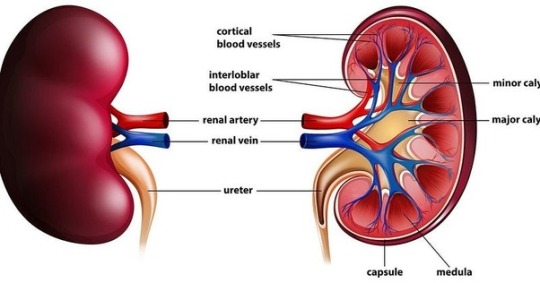
The kidneys are often regarded as the primary organs of excretion in the human body, responsible for filtering waste products and excess substances from the bloodstream and producing urine for elimination. Each kidney contains millions of functional units called nephrons, which play a crucial role in the filtration, reabsorption, and secretion of various substances. Nephrons filter blood to remove waste products, such as urea, creatinine, and uric acid, while reabsorbing essential nutrients and maintaining electrolyte balance. The resulting urine is then transported from the kidneys to the urinary bladder via the ureters and excreted from the body through the urethra during urination.
6. Urinary System

The kidneys, along with the ureters, urinary bladder, and urethra, collectively form the urinary system, which functions to transport, store, and eliminate urine from the body. The ureters carry urine from the kidneys to the urinary bladder, where it is stored until it is expelled from the body through the urethra. The urinary system plays a crucial role in maintaining fluid balance, electrolyte concentration, and pH regulation within the body, thereby supporting overall homeostasis and physiological function.
Conclusion
In conclusion, excretion is a vital process that enables living organisms to eliminate waste products and maintain internal balance. Through the coordinated efforts of various organs, including the skin, liver, large intestine, lungs, and kidneys, the body effectively removes metabolic wastes, toxins, and excess substances, thereby supporting overall health and homeostasis. Understanding the mechanisms of excretion and the roles of excretory organs is essential for appreciating the complexity of physiological regulation and the interconnection of bodily systems. By studying excretory processes, researchers and healthcare professionals can gain insights into disease mechanisms, develop therapeutic interventions, and promote optimal health and well-being.
For students seeking guidance and assistance with their academic assignments, Expert Academic Assignment Help stands out as an invaluable resource. With their unique and top-notch content, they offer solutions to various academic challenges, ranging from essays to research papers ,Clinical case studies and homework. Don’t hesitate to reach out to them for expert assistance and take your academic journey to the next level. For inquiries, contact [email protected]
#assignment help#medical students#healthcare#nursing student#nursing school#homework help#do my online class#medicine#health tips#health and wellness#healthylifestyle#medicare#clinicalstudy
0 notes
Text
Pulmonary Edema

Introduction
Pulmonary edema is a condition that results from the abnormal accumulation of fluid in the lungs, leading to impaired gas exchange and respiratory distress. This comprehensive discourse aims to provide an in-depth analysis of pulmonary edema, covering its pathophysiology, etiology, clinical manifestations, diagnostic modalities, treatment strategies, prevention strategies, and associated complications.
Pathophysiology of Pulmonary Edema

Pulmonary edema develops when there is an imbalance between the hydrostatic and oncotic pressures within the pulmonary vasculature. This imbalance leads to an increase in capillary permeability and the extravasation of fluid into the interstitial space and alveoli of the lungs. Several mechanisms contribute to this process, including increased capillary hydrostatic pressure due to heart failure, increased vascular permeability due to inflammation or injury, and decreased oncotic pressure due to hypoalbuminemia or capillary leak syndrome.
Etiology of Pulmonary Edema
The etiology of pulmonary edema can be categorized into cardiogenic and noncardiogenic causes. Cardiogenic pulmonary edema occurs secondary to heart failure or other cardiac conditions that result in elevated left atrial pressure and pulmonary venous congestion. Noncardiogenic pulmonary edema, on the other hand, is caused by factors unrelated to heart dysfunction, such as acute respiratory distress syndrome (ARDS), aspiration, sepsis, or neurogenic pulmonary edema.
Clinical Manifestations of Pulmonary Edema

The clinical presentation of pulmonary edema varies depending on the underlying cause and severity of the condition. Common symptoms include dyspnea, orthopnea, paroxysmal nocturnal dyspnea, cough, frothy sputum, cyanosis, and crackles on auscultation. Severe cases may progress to respiratory failure, hypoxemia, and hemodynamic instability.
Diagnostic Modalities for Pulmonary Edema

Diagnosing pulmonary edema requires a thorough clinical evaluation, including a detailed medical history, physical examination, and various diagnostic tests. Imaging studies such as chest X-ray, computed tomography (CT) scan, and lung ultrasound can provide valuable information about lung parenchymal changes and the presence of pulmonary congestion. Laboratory tests, including arterial blood gas analysis, brain natriuretic peptide levels, and electrolyte measurements, may also aid in the diagnosis and assessment of disease severity.
Treatment Strategies for Pulmonary Edema
The management of pulmonary edema involves addressing the underlying cause, relieving symptoms, and preventing complications. Initial treatment often includes supplemental oxygen therapy to improve oxygenation and reduce respiratory distress. Diuretics, such as furosemide or bumetanide, are commonly used to reduce fluid overload and alleviate pulmonary congestion. In cases of cardiogenic pulmonary edema, vasodilators, inotropes, or mechanical ventilation may be necessary to improve cardiac function and gas exchange.
Prevention Strategies for Pulmonary Edema
Preventing pulmonary edema requires a broad approach aimed at managing underlying risk factors and promoting healthy lifestyle habits. Patients with known cardiac conditions should adhere to prescribed medications, maintain a low-sodium diet, and monitor fluid intake to prevent fluid retention and exacerbation of heart failure. Individuals at risk of noncardiogenic pulmonary edema should avoid exposure to toxins, practice proper respiratory hygiene, and seek prompt medical attention for respiratory infections or injuries.
Complications of Pulmonary Edema

Untreated or inadequately managed pulmonary edema can lead to several complications, including acute respiratory distress syndrome (ARDS), cardiogenic shock, acute kidney injury, pulmonary hypertension, and death. Prompt recognition and intervention are essential to prevent progression to these life-threatening complications and improve patient outcomes.
Conclusion
Pulmonary edema is a complex and potentially life-threatening condition that requires prompt recognition, accurate diagnosis, and appropriate management. By understanding the underlying pathophysiology, etiology, clinical manifestations, diagnostic modalities, treatment strategies, prevention strategies, and associated complications of pulmonary edema, healthcare providers can optimize patient care and outcomes. Continued research efforts aimed at elucidating the mechanisms underlying pulmonary edema and identifying novel therapeutic targets are essential to further improve patient outcomes and reduce the global burden of this condition.
Embarking on your journey in the field of medicine is both exciting and challenging. As you navigate through your rigorous study period, it’s essential to seek guidance and assistance whenever needed to ensure your success.
At Expert Academic Assignment Help, we understand the demands of medical education and are here to support you every step of the way. Whether you require assistance with assignments, research papers, or exam preparation, our team of experts is dedicated to providing you with the help you need to excel in your studies.
Don’t hesitate to reach out to us for guidance, academic support, or any questions you may have. You can contact us via email at [email protected]
#assignment help#medical students#healthcare#nursing student#nursing school#expert assignment writers#academic assignments#homework help#do your homework#pharmacy student#pharmacy technician#pharmacology#health and wellness#health tips#health#medicine#treatment#health & fitness#healthylifestyle#high school#essay writing#essay#academic writing
0 notes
Text
6 Simple Steps To Score ‘A’ Grade On Your Research Paper

1. Building Your Thesis
Your thesis serves as the bedrock of your research paper, providing a central focus and guiding principle for your investigation. It’s imperative to construct your thesis around a clear and concise idea, premise, or claim that you intend to explore and defend throughout your paper. In the introduction, articulate precisely what your thesis aims to address, ensuring clarity and coherence from the start outlining the scope and significance of your thesis, you not only distinguish your paper from others but also establish a compelling rationale for your research. Moreover, show case to your readers the insights they stand to gain by engaging with your thesis, thereby enhancing the relevance and impact of your work.
2. Preparing an Outline

Crafting a comprehensive outline is an indispensable organizational tool in the research paper writing process. It functions as a strategic roadmap, enlightening the structure and content of your paper while facilitating coherence and logical progression. While there is no one-size-fits-all approach to outlining, it is essential to consider several key elements:
Content and Presentation Style: Determine the thematic framework and narrative structure for each section of your paper, ensuring alignment with your thesis.
Supporting Arguments and Evidence: Incorporate pertinent supporting arguments and empirical evidence to substantiate your thesis and bolster your overrating argument.
Cohesion and Conclusion: Ensure that your outline fosters cohesion by integrating disparate ideas and perspectives, culminating in a definitive conclusion that reinforces the significance of your research.
By vividly crafting an outline that contains these elements, you can streamline the writing process and maintain a cohesive and compelling narrative throughout your paper.
3. Conducting Research

Robust and thorough research is the cornerstone of a successful research paper, providing the empirical foundation and scholarly context necessary to substantiate your thesis. Begin by identifying a diverse array of potential sources that align with the theme focus and research objectives of your paper. With your outline serving as a strategic guide, embark on a systematic exploration of relevant literature, primary sources, and empirical data, prioritizing depth and breadth of coverage over superficiality. While evaluating sources, prioritize relevance and scholarly vigor over perfection, recognizing that the synthesis of diverse perspectives and methodologies can enrich your analysis and deepen the intellectual resonance of your paper.
4 . Writing Your Thesis

Armed with a comprehensive outline and an extensive body of research, it is time to translate your insights and arguments into a cognitive and compelling thesis. Drawing upon the scaffolding provided by your outline, into details craft each section of your paper, maintaining specificity to your thesis statement and overrated argument. Whether elucidating theoretical frameworks, analyzing empirical data, or synthesizing disparate perspectives, strive for consistency and coherence in your writing, ensuring that each subsection contributes meaningfully to the specific narrative of your paper. By adhering to the theme contours mentioned in your outline and showing the resilience of your thesis, you can construct a persuasive and intellectually rigorous argument that resonates with your readers.
5. Editing and Revision

The editing and revision process is an indispensable stage in refining the coherence, clarity, and scholarly rigor of your research paper. Upon completing the initial draft of your paper, undertake a comprehensive review and analysis, focusing on several key areas:
Structural Coherence: Evaluate the organizational coherence and logical progression of your paper, identifying opportunities to streamline transitions and enhance narrative flow.
Clarity and Precision: Scrutinize the clarity and precision of your prose, refining language and syntax to elucidate complex ideas and facilitate reader comprehension.
Scholarly Rigor: Verify the accuracy and integrity of your citations, ensuring adherence to established conventions of academic citation and attribution.
Grammar and Mechanics: Attend to grammatical errors, typographical inconsistencies, and syntactical ambiguities, rectifying any lapses in mechanics that deter from the scholarly integrity of your paper.
By subjecting your paper to rigorous scrutiny and revision, you can elevate the quality and scholarly resonance of your research, enhancing its capacity to engage and persuade your audience.
6. Creating a Checklist

As a culminating step, it is essential to create a comprehensive checklist to ensure that your research paper adheres to the highest standards of scholarly rigor and integrity. This checklist should encompass several key dimensions:
Content: Verify that your paper addresses all requisite components, including an introduction, literature review, methodology, findings, discussion, and conclusion.
Structure: Assess the structural coherence and narrative progression of your paper, ensuring that each section contributes meaningfully to the overarching argument.
Citation and Attribution: Confirm the accuracy and completeness of your citations, adhering to established conventions of academic citation and attribution.
Presentation: Review the formatting and presentation of your paper, attending to stylistic considerations such as font, spacing, and margins.
Proofreading: Conduct a final proofreading of your paper, scrutinizing for any lingering errors or oversights in grammar, syntax, or mechanics.
By rigorously adhering to this checklist, you can ensure that your research paper meets all necessary criteria for scholarly excellence and academic integrity, thereby maximizing its impact and credibility within the academic community.
By specifically following these six steps, you can consistently produce research papers of exceptional quality and academic rigor, irrespective of your current skill level or disciplinary background. Each step represents a critical juncture in the research paper writing process, providing a strategic framework for conceptualizing, organizing, and presenting your research in a compelling and intellectually rigorous manner. By embracing these principles and methodologies, you can elevate the caliber and excellent resonance of your research papers, thereby enhancing your academic proficiency and contributing meaningfully to the advancement of knowledge within your chosen field of study.
Crafting a top-notch research paper demands careful planning, thorough research, and diligent editing. Following the outlined steps can boost students’ writing skills and consistently lead to ‘A’ grades. Yet, academic writing complexities can overwhelm newcomers or those short on time.
Remember, seeking help isn’t weakness but a proactive strategy to ensure work quality. By utilizing available resources and seeking aid when necessary, students can ease academic writing stress and enrich their learning journey.
Therefore, I strongly encourage students to consider seeking assistance from Expert Academic Assignment Help by emailing [email protected] With their expertise and support, students can receive tailored guidance, feedback, and assistance throughout the research paper writing process. By leveraging the expertise of academic professionals, students can overcome challenges, refine their writing skills, and achieve academic success more effectively.
#medical students#assignment help#nursing school#nursing student#essay#essay writing#homework help#do your homework#case study#expert assignment writers#academic assignments#do my online class#proposal writing#online writing#research#research paper#clinical research#college student#pharmacy colleges#university student#university#phd life#phd thesis writing service#phdjourney#dissertation
0 notes
Text
What Is A Psychotic Disorders?

Introduction
Understanding psychotic disorders requires or encompassing various aspects such as types, symptoms, causes, diagnosis, treatment, prognosis, and preventive measures. Psychotic disorders constitute a diverse array of severe mental illnesses characterized by profound disturbances in cognition, emotion, communication, and behavior, significantly impairing individuals’ ability to function in daily life. Despite the gravity of these conditions, advancements in treatment modalities offer hope for recovery and effective management.
Types of Psychotic Disorders
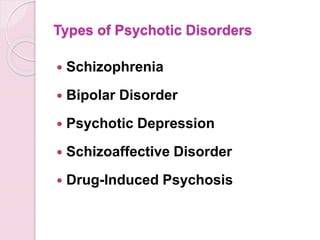
Schizophrenia
This debilitating disorder is characterized by profound alterations in behavior, delusions, and hallucinations persisting for at least six months. It exerts a profound impact on work, relationships, and overall functioning.
Schizoaffective Disorder
Combining features of schizophrenia with mood disorder symptoms like depression or bipolar disorder, schizoaffective disorder presents diagnostic and therapeutic challenges due to its complex symptomatology.
Schizophreniform Disorder
Resembling schizophrenia but with a shorter duration of symptoms (between one to six months), schizophreniform disorder provides insights into the acute phases of psychotic episodes.
Bipolar Psychotic Disorder
Individuals experience sudden, transient episodes of psychotic behavior, often precipitated by extreme stressors, with rapid recovery typically within a month.
Delusional Disorder
Centered around fixed false beliefs (delusions) concerning real-life situations, delusional disorder significantly influences perception and behavior, persisting for at least one month.
Shared Psychotic Disorder
Occurring when one individual’s delusion influences another within a close relationship, shared psychotic disorder elucidates the complexities of interpersonal dynamics in psychosis.
Substance-Induced Psychotic Disorder
Resulting from substance use or withdrawal, this condition underscores the intricate interplay between substance abuse and mental health.
Psychotic Disorder Due to Another Medical Condition
Hallucinations and delusions may arise secondary to underlying medical conditions affecting brain function, necessitating comprehensive evaluation and management.
Paraphrenia
Although not formally recognized in DSM-5, paraphrenia shares similarities with schizophrenia or delusional disorder and typically manifests in late adulthood, potentially associated with neurological factors.
Symptoms of Psychotic Disorders

Hallucinations
Involving perceptual experiences of stimuli that are not present in reality, hallucinations can manifest as auditory, visual, olfactory, gustatory, or tactile phenomena.
Delusions
These fixed, false beliefs persist despite evidence to the contrary, often revolving around themes of persecution, grandiosity, or paranoia.
Disorganized Thinking
Characterized by disjointed or incoherent thought processes, disorganized thinking manifests as impaired logical reasoning, tangential speech, or flight of ideas.
Bizarre Behavior
Individuals with psychotic disorders may exhibit unconventional or socially inappropriate behaviors, including agitation, catatonia, or unusual motor mannerisms.
Social Withdrawal
A hallmark feature of psychotic disorders is the withdrawal from social interactions and activities, often accompanied by a diminished interest in personal hygiene and self-care.
Mood Disturbances
Psychotic disorders may co-occur with mood symptoms such as depression or mania, further complicating the clinical presentation and treatment approach.
Causes of Psychotic Disorders

Genetic Predisposition
While genetic factors contribute to the risk of developing psychotic disorders, the inheritance pattern is complex, involving multiple genes and environmental interactions.
Environmental Factors
Stressful life events, trauma, childhood adversity, and substance abuse play significant roles in precipitating psychotic episodes and exacerbating symptoms.
Neurobiological Abnormalities
Dysregulation of neurotransmitters, particularly dopamine and glutamate, is implicated in the pathophysiology of psychotic disorders, affecting brain regions involved in cognition, perception, and emotion.
Diagnosis of Psychotic Disorders

A comprehensive diagnostic assessment involves obtaining a detailed medical and psychiatric history, conducting a thorough physical examination, performing laboratory tests to rule out medical conditions, and utilizing standardized psychiatric interviews and assessment tools.
Treatment of Psychotic Disorders

Medication
Antipsychotic medications are the cornerstone of pharmacological treatment, targeting symptoms such as delusions, hallucinations, and disorganized thinking. First-generation (typical) and second-generation (atypical) antipsychotics are prescribed based on efficacy and tolerability profiles, with newer agents offering improved side effect profiles and long-acting formulations enhancing treatment adherence.
Psychotherapy
Various forms of psychotherapy, including cognitive-behavioral therapy supportive therapy, and family therapy, complement pharmacotherapy by addressing psychosocial factors, enhancing coping skills, and improving functional outcomes.
Hospitalization
In severe cases or during acute psychotic episodes, hospitalization may be necessary to ensure safety, stabilize symptoms, and initiate intensive treatment interventions.
Prognosis and Recovery
The prognosis of psychotic disorders varies widely among individuals, influenced by factors such as early intervention, treatment adherence, social support, and the presence of comorbid conditions. While some individuals experience rapid symptom improvement and functional recovery, others may require long-term treatment and ongoing support to achieve stability and prevent relapse.
Prevention of Psychotic Disorders

Although prevention of psychotic disorders remains challenging, early intervention, identification of high-risk individuals, and mitigation of modifiable risk factors such as substance abuse and stress can reduce the incidence and severity of psychotic episodes. Public education, de stigmatization efforts, and access to mental health services promote awareness and facilitate timely intervention.
In conclusion, psychotic disorders represent complex and mental illnesses that profoundly impact individuals’ lives and necessitate comprehensive evaluation and treatment. By addressing the diverse array of symptoms, underlying neurobiological abnormalities, and psychosocial factors, clinicians can optimize treatment outcomes and support individuals in achieving improved quality of life and functioning. Through ongoing research, education, and advocacy, the understanding and management of psychotic disorders continue to evolve, offering hope for enhanced outcomes and reduced burden on affected individuals and society as a whole.
Students immersed in the fields of medical and psychology, seeking guidance from Expert Academic Assignment Help can be transformative. Whether it’s for assignments, studies, or navigating the challenges of medical School, expert assistance can provide clarity, direction, and invaluable insights. By reaching out to [email protected] students can access personalized support, comprehensive resources, and expert advice to excel in their academic pursuits and lay a solid foundation for their future careers. Don’t hesitate to seek guidance — your academic success and professional growth are worth investing in.
#assignment help#healthcare#medical students#nursing student#nursing school#psychology#psychosis#homework help#pharmacy student#pharmacy technician#pharmacology#health tips#health and wellness#mental health#health#expert assignment writers#academic assignments#psychiatry#psychiatrist
0 notes
Text
Cirrhosis Of The Liver

Introduction
Cirrhosis stands as a challenge in the narrative of liver disease, marking the culmination of a complex interplay of factors that converge to undermine the organ’s structural integrity and functional capacity. This condition, characterized by the progressive accumulation of scar tissue within the liver parenchyma, holds a cascade of physiological network that reverberate throughout the body, manifesting in a spectrum of symptoms and complications. From its inner onset to its profound implications for morbidity and mortality, cirrhosis generate the intricate interplay between genetic predisposition, environmental influences, and individual behaviors.
In this comprehensive discussion, we embark on an exploration of the multifaceted dimensions of cirrhosis, traversing its etiological underpinnings, clinical manifestations, diagnostic modalities, therapeutic strategies, and avenues for prevention and self-care. By delving into the intricacies of cirrhosis, we endeavor to elucidate the imperative of early recognition, proactive intervention, and holistic management in ameliorating its adverse sequelae and fostering optimal outcomes for affected individuals
Pathophysiology of Cirrhosis

Central to the pathogenesis of cirrhosis lies a complex interplay of molecular and cellular events that precipitate the gradual transformation of healthy hepatic tissue into fibrotic scar tissue. At the heart of this process lies fibrogenesis, wherein a multitude of cellular players, including hepatic stellate cells, inflammatory mediators, and extracellular matrix proteins, triggers a profibrotic milieu in response to persistent liver injury and inflammation. The ensuing deposition of collagen-rich scar tissue disrupts the structure of the liver lobules, impeding normal hepatocellular function and vascular dynamics.
Symptoms and Clinical Manifestations

The clinical presentation of cirrhosis spans a broad spectrum, reflecting the diverse array of physiological derangements engendered by advanced liver disease. Early-stage cirrhosis may manifest subtly, with nonspecific symptoms such as fatigue, malaise, and vague abdominal discomfort, often eluding timely diagnosis. However, as the disease progresses, overt signs of hepatic decompensation emerge, including jaundice, ascites, hepatic encephalopathy, and gastrointestinal bleeding, heralding the onset of life-threatening complications. Moreover, cirrhosis exerts systemic effects beyond the confines of the liver, precipitating coagulopathy, renal dysfunction, and metabolic disturbances.
Etiology and Risk Factors
Cirrhosis arises from an influence of etiological insults, encompassing a diverse spectrum of predisposing factors that contribute to hepatocellular injury and fibrogenesis. Foremost among these is chronic alcohol abuse, which inflicts direct hepatotoxic effects and potentiates oxidative stress and inflammatory cascades within the liver microenvironment. Additionally, viral hepatitis infections, particularly hepatitis B and C, constitute major drivers of cirrhosis worldwide, underscoring the imperative of vaccination and antiviral therapy in disease prevention and management. Other contributing factors include nonalcoholic fatty liver disease, autoimmune disorders, hereditary hemochromatosis, and biliary tract diseases, each exerting a unique influence on cirrhosis pathogenesis.
Diagnostic Modalities

Accurate diagnosis forms the linchpin of effective cirrhosis management, necessitating a judicious amalgamation of clinical symptoms, laboratory investigations, imaging modalities, and histopathological evaluation. Liver function tests serve as indispensable tools for gauging the synthetic and metabolic capacity of the liver, while imaging studies such as ultrasound, computed tomography (CT), and magnetic resonance imaging (MRI) afford insights into hepatic morphology, vascular dynamics, and the presence of focal lesions. Despite their utility, these modalities may be supplemented by liver biopsy, which remains the gold standard for assessing the degree of fibrosis and guiding therapeutic decisions, albeit fraught with procedural risks and sampling variability.
Treatment Strategies

While cirrhosis represents a chronic and irreversible condition, therapeutic interventions are geared toward monitoring disease progression, alleviating symptoms, and forestalling the onset of complications. Pharmacological therapies, including hepatoprotective agents, antifibrotic agents, and symptom-based medications, aim to attenuate hepatic inflammation, inhibit fibrogenesis, and ameliorate symptom burden in cirrhotic patients. Furthermore, endoscopic interventions such as variceal band ligation and trans jugular intrahepatic portosystemic shunting play a major role in the management of portal hypertension and its sequelae, including variceal bleeding and refractory ascites. For select individuals with end-stage liver disease, liver transplantation offers a definitive therapeutic option, affording a second lease on life and circumventing the inexorable progression of cirrhosis-related complications.
Self-Care and Lifestyle

Empowering individuals with cirrhosis to adopt proactive self-care measures constitutes a cornerstone of comprehensive disease management, emphasizing the role of lifestyle modifications, dietary interventions, and preventive strategies in optimizing health outcomes. Lifestyle modifications, including abstinence from alcohol, adherence to a liver-friendly diet, regular exercise, and smoking cessation, are paramount in attenuating hepatic inflammation, promoting metabolic homeostasis, and mitigating cardiovascular risk factors in cirrhotic patients. Additionally, vaccination against hepatitis viruses, avoidance of hepatotoxic medications, and judicious monitoring of comorbid conditions serve as essential pillars of preventive care, safeguarding against disease exacerbations and fostering long-term wellness in individuals with cirrhosis.
Conclusion
Cirrhosis emerges as a complex and a dangerous disease, syndrome characterized by progressive hepatic fibrosis, compromised organ function, and a plethora of systemic manifestations. The etiological heterogeneity of cirrhosis underscores the need for a personalized and multidisciplinary approach to disease management, Focusing to the unique pathophysiological mechanisms and clinical manifestations inherent to each individual. Through timely diagnosis, targeted interventions, and collaborative care, healthcare providers can mitigate the burden of cirrhosis, optimize patient quality of life, and prolong survival in affected individuals. As we navigate complexities of cirrhosis, a concerted emphasis on preventive measures, patient education, and therapeutic innovations holds the key to unlocking a brighter prognosis for those afflicted by this formidable liver disease.
Medical students encounter significant academic challenges during their studies, balancing coursework, clinical rotations, research, and personal commitments. Expert Academic Assignment Help offers tailored assistance to meet their needs, providing study materials, tutoring, assignment help, and exam preparation. Beyond academics, it fosters a supportive environment for mentorship and guidance. In essence, Expert Academic Assignment Help is a valuable resource for medical students, empowering them to excel academically and develop into competent healthcare professionals. Contact at [email protected]
for assistance guidance.
#assignment help#healthcare#medical students#nursing student#nursing school#medical school#medical student#homework help#academic assignments#medicine#clinical research#research#research paper#medical conditions#medical assistance#health tips#pharmacy student#pharmacology#pharmacy technician#pharmacy
0 notes
Text
Diabetes

Introduction to Diabetes
Diabetes, a metabolic disorder characterized by chronic hyperglycemia, arises from abnormalities in insulin secretion, insulin action, or both. The condition’s prevalence has reached epidemic proportions globally, with significant health, economic, and social implications.
Types of Diabetes
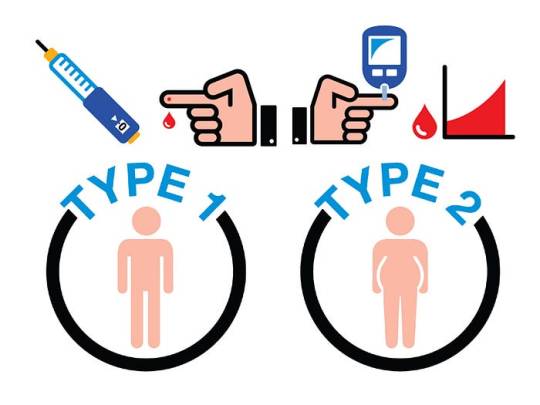
Type 1 Diabetes: This autoimmune disease results from the destruction of pancreatic beta cells, leading to absolute insulin deficiency. Genetics and environmental triggers play pivotal roles in its pathogenesis. Despite being less common than Type 2 diabetes, its onset during childhood or adolescence significantly impacts individuals’ lives.
Type 2 Diabetes: Predominantly a disorder of insulin resistance, Type 2 diabetes accounts for the majority of diabetes cases worldwide. Lifestyle factors, genetic predisposition, and obesity contribute to its development. Its insidious onset often leads to delayed diagnosis and increased risk of complications.
Gestational Diabetes: Occurring during pregnancy, gestational diabetes poses risks to both maternal and fetal health. Hormonal changes and insulin resistance characterize its pathophysiology. Effective screening and management are crucial to prevent adverse outcomes.
Other Types of Diabetes: Variants like MODY, LADA, and secondary diabetes present unique challenges in diagnosis and management, requiring tailored approaches to care.
Epidemiology and Prevalence
Diabetes prevalence varies across demographics, with disparities observed in age, gender, ethnicity, and socioeconomic status. The escalating burden of diabetes underscores the urgent need for targeted prevention and management strategies.
Symptoms and Causes

Hyperglycemia-induced symptoms like polyuria, polydipsia, and unexplained weight loss serve as clinical indicators for diabetes diagnosis. Understanding the complex interplay of genetic, environmental, and lifestyle factors elucidates the condition’s etiology.
Complications
Diabetes complications encompass a spectrum of microvascular and macrovascular disorders, significantly impacting quality of life and life expectancy. From diabetic retinopathy to cardiovascular disease, nephropathy, neuropathy, and diabetic foot complications, the ripple effects of uncontrolled diabetes are profound.
Diagnosis and Tests

Accurate diagnosis relies on comprehensive evaluation, including fasting glucose, oral glucose tolerance tests, and hemoglobin A1c measurements. Screening recommendations aim to identify at-risk individuals early, facilitating timely intervention and risk reduction.
Management and Treatment
Diabetes management strategies encompass pharmacotherapy, lifestyle modifications, patient education, and multidisciplinary care. Individualized treatment plans address glycemic control, blood pressure management, lipid optimization, and prevention of complications.
Prevention
Prevention initiatives target modifiable risk factors through health promotion, public health interventions, and community engagement. Emphasizing the role of nutrition, physical activity, and behavioral changes empowers individuals to mitigate their diabetes risk.
Outlook and Prognosis
Prognostic factors such as glycemic control, adherence to therapy, comorbidity burden, and psychosocial support influence long-term outcomes. Enhanced collaboration among healthcare providers, policymakers, and stakeholders is essential to improve diabetes prognosis globally.
Living With Diabetes

Coping with diabetes requires resilience, self-management skills, and social support networks. Empowering individuals through education, self-monitoring tools, and peer support enhances their capacity to navigate the challenges of daily diabetes management.
Impact on Individuals and Society
Diabetes exerts a profound socioeconomic burden, encompassing healthcare costs, productivity losses, and reduced quality of life. Addressing the psychosocial dimensions of diabetes care is integral to fostering holistic well-being and societal resilience.
Future Directions and Research

Advancements in diabetes research, including precision medicine, digital health technologies, and novel therapeutics, offer promising avenues for disease management and prevention. Collaborative research endeavors aim to translate scientific discoveries into tangible clinical benefits.
Conclusion
In conclusion, diabetes represents public health challenge necessitating a comprehensive, patient-centered approach. By fostering awareness, promoting early detection, and advancing evidence-based interventions, we can mitigate the impact of diabetes on individuals, families, and communities worldwide.
Medical students encounter significant academic challenges during their studies, balancing coursework, clinical rotations, research, and personal commitments. Expert Academic Assignment Help offers tailored assistance to meet their needs, providing study materials, tutoring, assignment help, and exam preparation. Beyond academics, it fosters a supportive environment for mentorship and guidance. In essence, Expert Academic Assignment Help is a valuable resource for medical students, empowering them to excel academically and develop into competent healthcare professionals. Contact at [email protected] for assistance.
#assignment help#healthcare#medical students#nursing student#nursing school#medical school#medical student#medicine#health tips#health and wellness#health#health & fitness#diabetes#diabetic#medical help#medical assistance#pharmacy student#pharmacy technician#homework help#academic assignments#expert assignment writers
0 notes
Text
How to Write a Case Study

Introduction
The case study indulges into the ideal process of rehabilitating a semi-professional cyclist who underwent a traumatic transfemoral amputation due to a road traffic accident. This comprehensive analysis aims to shed light on the complexities of limb loss rehabilitation, emphasizing the importance of tailored interventions and evidence-based practice in optimizing outcomes for individuals facing similar challenges.
Client Characteristics
In this section, a detailed exploration of the patient’s background, lifestyle, and medical history provides crucial insights into his unique rehabilitation needs. Emphasis is placed on the impact of the accident on the patient’s physical and psychological well-being, as well as his aspirations for returning to an active lifestyle post-amputation.
The patient, a previously healthy 24-year-old male, was actively engaged in semi-professional cycling and held a physically demanding job at a bicycle shop. The road traffic accident resulted in a traumatic transfemoral amputation, significantly altering his physical capabilities and emotional state. His aspirations to return to his previous level of physical activity underscore the importance of addressing both the physical and psychological aspects of his rehabilitation journey.
Examination Findings
A thorough examination is conducted to assess the patient’s physical condition and identify areas of impairment resulting from the amputation. Objective measurements, including strength assessments and gait analysis, complement subjective reports of phantom limb pain and functional limitations, forming the basis for the subsequent formulation of a clinical hypothesis.
The examination reveals significant impairments in strength and mobility, as well as the presence of phantom limb pain, which negatively impacts the patient’s daily life and rehabilitation progress. These findings highlight the need for a comprehensive treatment approach that addresses both the physical and psychological aspects of the patient’s condition.
Clinical Hypothesis/Impression
Drawing on current research and clinical expertise, the clinical hypothesis focuses on addressing the patient’s complex pain experience and psychological distress following the amputation. The identification of neuropathic pain mechanisms and the potential efficacy of interventions such as mirror therapy and mental imagery inform the development of a tailored treatment plan aimed at promoting pain relief and enhancing functional recovery.
The clinical hypothesis highlights the importance of addressing the underlying causes of the patient’s pain and implementing evidence-based interventions to optimize his rehabilitation outcomes. By targeting both the physical and psychological aspects of his condition, the treatment plan aims to improve the patient’s overall quality of life and facilitate his successful return to daily activities.
Intervention
The intervention plan is majorly crafted to address the patient’s unique rehabilitation goals and challenges. A multi-disciplinary approach, incorporating pharmacological interventions, prosthetic care, and psychological support, is implemented to optimize outcomes and empower the patient in his journey towards recovery. Detailed descriptions of specific treatment modalities and their rationale are provided, highlighting the importance of individualized care and ongoing monitoring throughout the rehabilitation process.
The intervention plan includes a combination of pharmacological management, prosthetic fitting and training, and psychological support to address the patient’s physical and psychological needs. Each component of the plan is tailored to the patient’s specific goals and challenges, with regular monitoring and adjustments made to ensure optimal outcomes.
Outcome
Objective measures are used to track the patient’s progress and evaluate the effectiveness of the intervention plan. Significant improvements in pain management, functional mobility, and quality of life are observed over the course of treatment, with particular emphasis on the transformative impact of mirror therapy on the patient’s pain experience and overall well-being. The importance of ongoing follow-up and support is emphasized as integral to maintaining long-term gains and facilitating the patient’s successful reintegration into daily activities.
The patient demonstrates significant improvements in pain management, functional mobility, and overall quality of life following the implementation of the intervention plan. Objective measures, including pain intensity ratings and functional assessments, demonstrate tangible improvements in the patient’s physical and psychological well-being, highlighting the effectiveness of the multi-disciplinary approach employed in his rehabilitation.
Discussion
A comprehensive discussion examines the broader implications of the case study for physiotherapy practice, highlighting the importance of holistic rehabilitation approaches that address the complex interplay of physical, psychological, and social factors in individuals with limb loss. Key lessons learned from the case study, including the value of evidence-based practice and the need for ongoing collaboration between healthcare professionals, are discussed in relation to optimizing outcomes and promoting patient-centered care.
The discussion explores the broader implications of the case study for physiotherapy practice, emphasizing the importance of adopting a holistic approach to rehabilitation that addresses the complex needs of individuals with limb loss. By integrating evidence-based interventions and fostering interdisciplinary collaboration, healthcare professionals can enhance the effectiveness of rehabilitation interventions and improve outcomes for patients with limb loss.
Conclusion
In conclusion, the extended case study provides a detailed exploration of the rehabilitation journey of a semi-professional cyclist following a traumatic limb amputation. Through a comprehensive analysis of client characteristics, examination findings, intervention strategies, and outcomes, valuable insights are gained into the complexities of limb loss rehabilitation and the importance of personalized, evidence-based care in achieving optimal outcomes for individuals facing similar challenges.
The case study underscores the importance of adopting a holistic approach to rehabilitation that addresses the physical, psychological, and social aspects of limb loss by focusing on interventions to the unique needs of each patient and fostering interdisciplinary collaboration, healthcare professionals can optimize outcomes and improve the quality of life for individuals with limb loss.
As academic students and researchers navigate the challenges of their assignments and research endeavors, Expert Academic Assignment Help stands ready to provide professional guidance and assistance. Whether you require support with assignment writing, research paper assistance, or essay help, our team of experts is dedicated to helping you achieve academic excellence. Reach out to us today at [email protected] and let us support you on your academic journey. We wish you success and professional excellence.
#assignment help#healthcare#medical students#nursing student#nursing school#research paper#research#clinicalstudy#clinical research#case study#medical school#medical help#medical student#nursing#nurses#nurse#pharmacology#pharmacy student#pharmacy technician
0 notes
Text
H. pylori Infection

Introduction
Helicobacter pylori (H. pylori) infection is a significant global health concern, affecting a substantial portion of the world’s population. The discussion aims to provide an in-depth exploration of various aspects of H. pylori infection, including its prevalence, transmission, symptoms, diagnosis, treatment, complications, prevention strategies, and future research directions.
Prevalence and Transmission
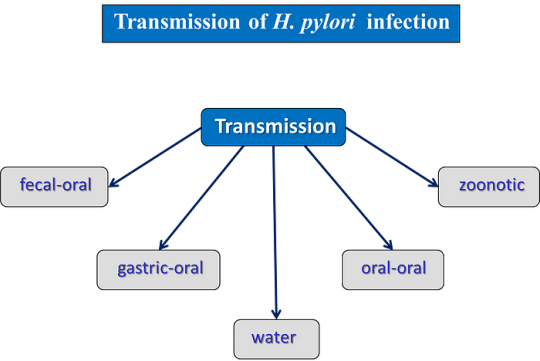
H. pylori infection is widespread, with approximately two-thirds of the world’s population harboring the bacterium in their gastrointestinal tract. Various factors contribute to its prevalence, including socioeconomic status, living conditions, hygiene practices, and geographic location. The discussion indulges into the epidemiological trends of H. pylori infection across different populations and regions, highlighting disparities in prevalence rates and associated risk factors.
Transmission of H. pylori occurs primarily through interpersonal contact and ingestion of contaminated food or water. Saliva, fecal-oral transmission, and oral-oral transmission, including through kissing, are significant modes of spread. Poor sanitation and overcrowded living conditions facilitate the transmission of the bacterium, particularly in resource-limited settings. The discussion explores the mechanisms of H. pylori transmission and the implications for public health interventions aimed at reducing its spread.
Symptoms and Diagnosis

While many individuals with H. pylori infection remain asymptomatic, others experience a range of gastrointestinal symptoms, including stomach pain, bloating, nausea, and weight loss. The discussion elucidates the spectrum of clinical manifestations associated with H. pylori infection, emphasizing the importance of recognizing atypical presentations and considering differential diagnoses.
Diagnosing H. pylori infection presents several challenges due to the variability of symptoms and the limitations of available diagnostic tests. We critically evaluates the utility of different diagnostic modalities, including stool antigen tests, urea breath tests, and upper gastrointestinal endoscopy, in detecting H. pylori infection. It also examines the role of serological tests and molecular techniques in enhancing diagnostic accuracy and guiding clinical management decisions.
Treatment Options

The standard treatment regimens for H. pylori infection typically involve a combination of antibiotics and proton pump inhibitors (PPIs). However, rising rates of antibiotic resistance pose significant challenges to effective eradication therapy. It explores the mechanisms of antibiotic resistance in H. pylori and the implications for treatment outcomes.
Alternative treatment approaches, such as sequential therapy, concomitant therapy, and bismuth-based quadruple therapy, are also examined in the context of their efficacy and tolerability. Highlighting the importance of individualizing treatment regimens based on antibiotic susceptibility testing and patient-specific factors to optimize therapeutic outcomes.
Complications

Peptic ulcers are a common complication of H. pylori infection, resulting from the bacterium’s ability to disrupt the gastric mucosal barrier and induce inflammation. The discussion elucidates the pathophysiology of peptic ulcer formation and the factors contributing to ulcer recurrence and complications.
In addition to peptic ulcers, H. pylori infection is associated with an increased risk of more serious complications, such as gastric cancer and mucosa-associated lymphoid tissue (MALT) lymphoma. The discussion explores the molecular mechanisms underlying H. pylori-induced carcinogenesis and the strategies for early detection and management of gastric neoplasms.
Prevention
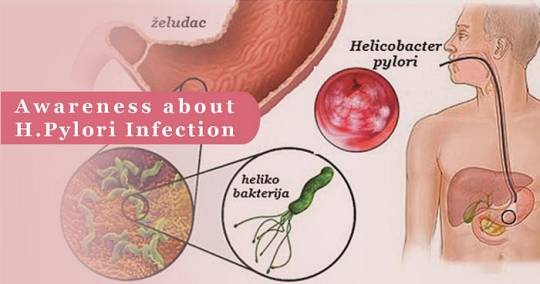
Preventive measures play a crucial role in reducing the burden of H. pylori infection and its associated complications. The discussion emphasizes the importance of promoting good hygiene practices, including handwashing and sanitation, to minimize the risk of transmission.
Furthermore, dietary factors may influence the risk of H. pylori infection and its clinical outcomes. The discussion evaluates the evidence regarding the impact of dietary habits, such as consumption of fruits, vegetables, and probiotics, on H. pylori colonization and disease progression. It also addresses the potential role of vaccination in preventing H. pylori infection and its complications, highlighting ongoing research efforts in vaccine development.
Research and Future Directions
Ongoing research efforts are focused on advancing our understanding of H. pylori pathogenesis, identifying novel therapeutic targets, and developing effective preventive strategies. The discussion highlights recent advancements in H. pylori research, including insights into bacterial virulence factors, host immune responses, and microbial interactions within the gastric microbiota.
Future directions in H. pylori research encompass a multidisciplinary approach, integrating molecular biology, epidemiology, immunology, and clinical medicine. The discussion outlines key areas for future investigation, such as the development of targeted antimicrobial agents, the role of host genetics in H. pylori susceptibility, and the impact of microbial dysbiosis on disease outcomes.
Conclusion
In conclusion, H. pylori infection remains a significant public health challenge, with implications for gastrointestinal health and disease worldwide. A comprehensive understanding of the epidemiology, pathogenesis, diagnosis, treatment, and prevention of H. pylori infection is essential for guiding clinical practice and informing public health policies. By addressing the complexities of H. pylori infection through interdisciplinary research and collaborative efforts, we can strive towards reducing its global burden and improving patient outcomes.
In managing H. pylori infection, compassion, empathy, and a holistic approach are crucial alongside clinical expertise. Striving for excellence in knowledge and practice enables us to advance gastroenterology and improve patient outcomes.
As we address H. pylori infection and its broader implications on gastrointestinal health, let’s remain dedicated to providing optimal patient care. By working collaboratively and embracing interdisciplinary approaches, we can positively impact lives and contribute to a healthier future.
Email [email protected] to explore how we can assist you in achieving your academic and professional aspirations. Wishing you continued success in your medical journey.
#assignment help#medical students#healthcare#nursing school#puppies#nursing student#medical help#medical school#expert assignment writers#online writing#essay writing#clinicalstudy#case study#medical conditions#pharmacology#homework help#pharmacy student#pharmacy colleges#pharmacy technician#pharmacy
0 notes